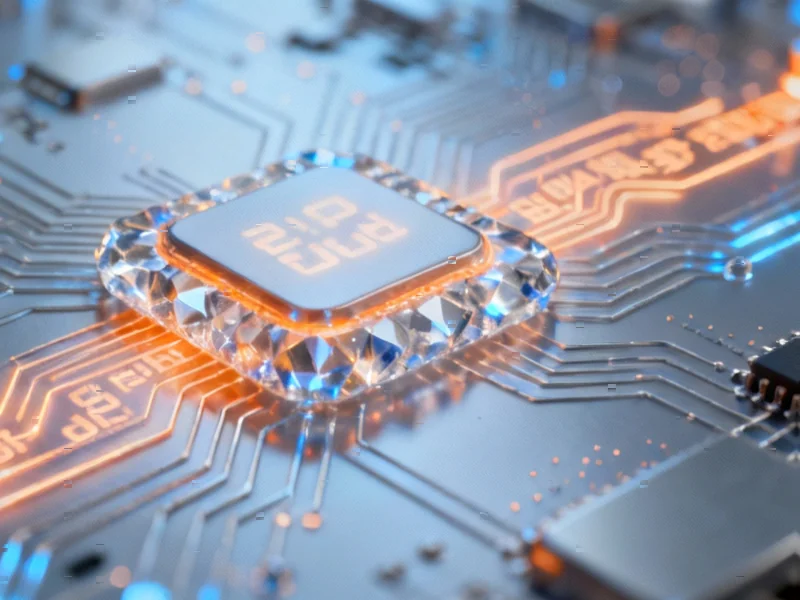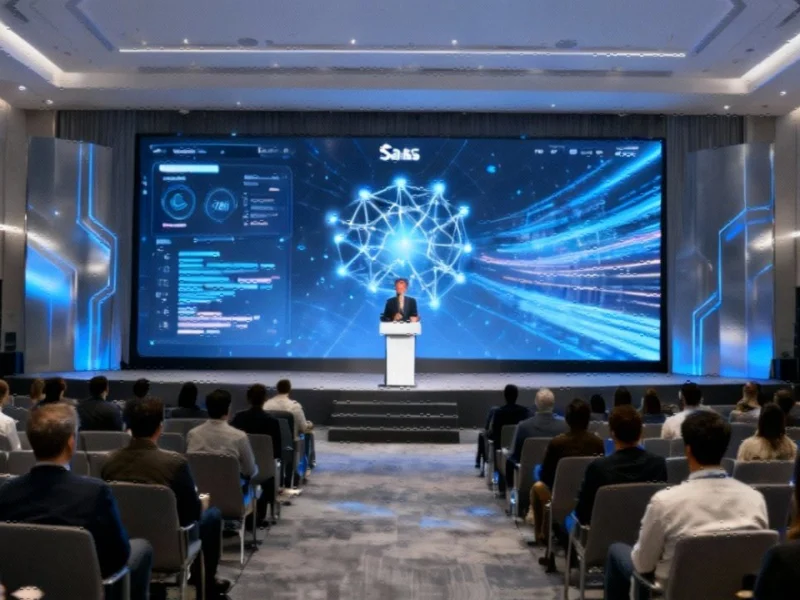{“@context”: “https://schema.org”, “@type”: “NewsArticle”, “headline”: “DeepSeek’s OCR Breakthrough Challenges AI’s Text Processing Paradigm by Treating Words as Visual Data”, “image”: [], “datePublished”: “2025-10-20T23:27:38.559398”, “dateModified”: “2025-10-20T23:27:38.559398”, “author”: {“@type”: “Organization”, “name”: “Tech News Hub”}, “publisher”: {“@type”: “Organization”, “name”: “Tech News Hub”}, “description”: “The Vision-Language Revolution In a surprising move that could reshape how artificial intelligence processes written information, DeepSeek has introduce…”}
The Vision-Language Revolution
In a surprising move that could reshape how artificial intelligence processes written information, DeepSeek has introduced a novel approach that treats Optical Character Recognition (OCR) as “optical compression.” This conceptual shift represents more than just another incremental improvement in text recognition—it challenges fundamental assumptions about how large language models should consume and process written content., according to recent studies
Table of Contents
The core innovation lies in representing text visually rather than as discrete tokens. Where traditional LLMs process text tokens directly—an approach that scales quadratically with length and creates computational bottlenecks—DeepSeek-OCR maintains text in its native visual form. A page of text becomes simply an image, compressed optically rather than broken into linguistic units.
Rethinking AI’s Input Pipeline
This development raises profound questions about the efficiency of current AI architectures. As one computer vision specialist temporarily working in natural language processing noted, the approach forces us to ask: Are pixels actually better inputs to LLMs than text? The implication that text tokens might be “wasteful and just terrible at the input” strikes at the heart of how we’ve built language models to date.
The traditional token-based approach, while effective for many tasks, carries significant computational overhead. Each token requires processing, and the attention mechanisms that make transformers powerful scale quadratically with sequence length. By treating text as visual data, DeepSeek potentially bypasses these limitations, offering a more scalable pathway for processing lengthy documents.
Technical Implications and Industry Impact
Early assessments suggest DeepSeek-OCR performs competitively with established OCR systems, perhaps slightly behind industry leaders but demonstrating compelling capabilities. More importantly, the model’s architecture suggests a different philosophy toward information representation.
This optical compression approach could have far-reaching consequences for:
- Document processing efficiency – Handling books, legal documents, and research papers with reduced computational requirements
- Multimodal AI development – Creating more seamless integration between visual and linguistic understanding
- Hardware optimization – Leveraging computer vision accelerators for text-heavy tasks
- Data storage and transmission – Compressing textual information using visual representation techniques
The Broader AI Landscape
This innovation arrives amid intense competition in the AI sector, where companies like OpenAI are securing massive computational resources to maintain their edge. DeepSeek’s approach suggests alternative pathways to scaling—rather than simply pursuing larger models with more parameters, we might achieve similar breakthroughs through architectural innovation.
The timing is particularly significant as the industry grapples with the computational limits of transformer architectures. If visual representation of text proves more efficient than token-based processing, it could enable new classes of applications that handle extensive documents, historical archives, and multi-page content with unprecedented efficiency.
Future Directions and Challenges
While promising, the optical compression approach faces several hurdles. The accuracy of OCR systems remains critical—any errors in text recognition propagate through subsequent processing. Additionally, the integration of visually-represented text with existing language model architectures requires careful engineering., as detailed analysis
Nevertheless, DeepSeek’s paper signals a growing recognition that breakthrough AI capabilities may come not from scaling existing approaches, but from fundamentally reimagining how we represent and process information. As the industry races to develop ever-more-capable AI systems, such paradigm-challenging innovations may prove more valuable than incremental improvements to established methods.
The coming months will reveal whether this optical compression concept represents a niche optimization or the beginning of a broader shift in how AI systems consume and process the written word. What’s clear is that the boundaries between computer vision and natural language processing continue to blur, creating opportunities for cross-disciplinary breakthroughs that could redefine artificial intelligence’s capabilities.
Related Articles You May Find Interesting
- New Research Uncovers Chemotherapy’s Hidden Impact on Brain Function Through Lym
- Comet Browser Enforces Fixed New Tab Page with Perplexity AI Integration, Blocks
- Yen’s Political Crossroads: How Japan’s Leadership Shift Could Reshape Monetary
- AI Trading Revolution Pushes NYSE Infrastructure to New Frontiers
- Finster AI’s $15M Series A Fuels Expansion of Secure Financial Research Platform
References & Further Reading
This article draws from multiple authoritative sources. For more information, please consult:
This article aggregates information from publicly available sources. All trademarks and copyrights belong to their respective owners.
Note: Featured image is for illustrative purposes only and does not represent any specific product, service, or entity mentioned in this article.



